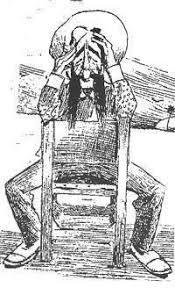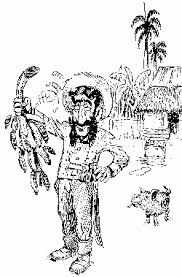HISTORIA DE “LIBORIO”, EL SIMBOLO IMAGINARIO DEL PUEBLO CUBANO.
“Liborio”, como ningún otro personaje del imaginario popular representa al pueblo de Cuba. Es para los cubanos lo que es ‘Juan’ para los españoles, ‘John Bull’ para los ingleses, ‘Asterix’ para los franceses o el ‘tío Sam’ para las norteamericanos.
Algunos consideran que el posible origen de Liborio se encuentra en las Aventuras de un mayoral de Juan Jiménez. Este personaje tan querido por los cubanos tiene una larga tradición en el humorismo y la caricatura política, ya que ha personificado y simbolizado a la nación cubana en todos los desafíos que le ha tocado afrontar en su historia.
Unos consideran que Liborio no es tan representativo del sentir popular, pues fue utilizado por la sátira política a partir de 1902 con posiciones partidistas muy bien definidas que lo convirtieron en el representante de una parte del pueblo de Cuba, pero no de todo el pueblo de Cuba.
Expresan estos señores que Liborio no es más que una copia al carbón del Guajiro de Landaluce que realizó Ricardo de la Torriente para transmitir su mensaje político y que no pasaba de ser un personaje sumiso y llorón lo que daba muy mala fama a los cubanos.
Sin embargo, este es el Liborio que le gustó a la gente y el que se ganó el sentir popular del pueblo cubano. Prueba de eso es que años después, durante el gobierno de Gerardo Machado, apareció un Liborio sin patillas, valiente y emprendedor y no le gusto a nadie…
Hacia los años cincuenta surgieron otras versiones más modernas de Liborio y hasta surgió Liborito Pérez, versión más ligera y con distinto talante: sin patillas ni bigote, de cara regordeta y sombrero mambí y guayabera criolla. Esta nueva versión de Liborio apareció también en el semanario humorístico ‘Zigzag’ de Castor Vispo y Roseñada, que en cierta forma fue el continuador, al menos en el estilo humorístico de La Política Cómica.
Hoy, décadas después, este personaje en si, como símbolo del pueblo cubano NO ha cambiado. Lo que sí es diferente es su representación, es decir, su imagen y vestimenta. Sigue siendo el mismo hombre sufrido, pegado a la tierra, con sombrero de guano, pero ha perdido su inmaculada guayabera blanca. Viste una camisa raída, unos pantalones desgarrados y anda descalzo.
Ya no lleva su machete al cinto, ahora lleva atado a uno de sus pies una gruesa cadena de metal de la que arrastra una pesada bola de hierro, igual al grillete que llevaba nuestro apóstol José Martí” cuando estuvo en prisión a los diecisiete años.
Es irónico, si no fuera desgarradoramente triste. Después de mas de un siglo transcurrido, estamos como Martí, en el punto de partida.
HISTORY OF “LIBORIO”, THE IMAGINARY SYMBOL OF THE CUBAN PEOPLE.
“Liborio”, like no other character in the popular imagination, represents the Cuban people. It is for the Cubans what ‘Juan’ is for the Spanish, ‘John Bull’ for the English, ‘Asterix’ for the French, or ‘Uncle Sam’ for the North Americans.
Some consider that the possible origin of Liborio is in Juan Jiménez’s Aventuras de un mayoral. This character so beloved by Cubans has a long tradition in humor and political caricature since he has personified and symbolized the Cuban nation in all the challenges it has had to face in its history.
Some consider that Liborio is not so representative of popular sentiment, as he was used for political satire from 1902 with very well-defined partisan positions that made him the representative of a part of the Cuban people, but not of all the people of Cuba.
These gentlemen express that Liborio is nothing more than a carbon copy of the Guajiro de Landaluce that Ricardo de la Torriente made to convey his political message and that he was no more than a submissive and crying character, which gave a very bad reputation to the Cubans.
However, this is the Liborio that the people liked and the one that won the popular feeling of the Cuban people. Proof of this is that years later, during the government of Gerardo Machado, a Liborio without sideburns appeared, brave and enterprising and no one liked me.
Around the fifties, other more modern versions of Liborio emerged and Liborito Pérez even emerged, a lighter version with a different mood: without sideburns or mustache, with a plump face and a mambí hat and Creole guayabera. This new version of Liborio also appeared in the humorous weekly ‘Zigzag’ by Castor Vispo and Roseñada, who in a certain way was the follower, at least in the humorous style of La Política Cómica.
Today, after decades later, this character himself, as a symbol of the Cuban people, has NOT changed. What is different is the representation of him, that is, his image and clothing. He is still the same long-suffering man, stuck to the ground, with a guano hat, but he has lost his immaculate white guayabera. He wears a ragged shirt, ripped pants, and is barefoot.
He no longer carries his machete on his belt, now he has a thick metal chain tied to one of his feet, from which he is dragging a heavy iron ball, just like the shackle worn by our apostle José Martí “when he was in prison at seventeen years old.
It is ironic if it weren’t heartbreakingly sad. After more than a century passed, we are like Martí, at the starting point.
Agencies/ Juan Perez/ TodoCuba/ Extractos/ Excerpts/ Internet Photos/ Arnoldo Varona/ www.TheCubanHistory.com
THE CUBAN HISTORY, HOLLYWOOD.













